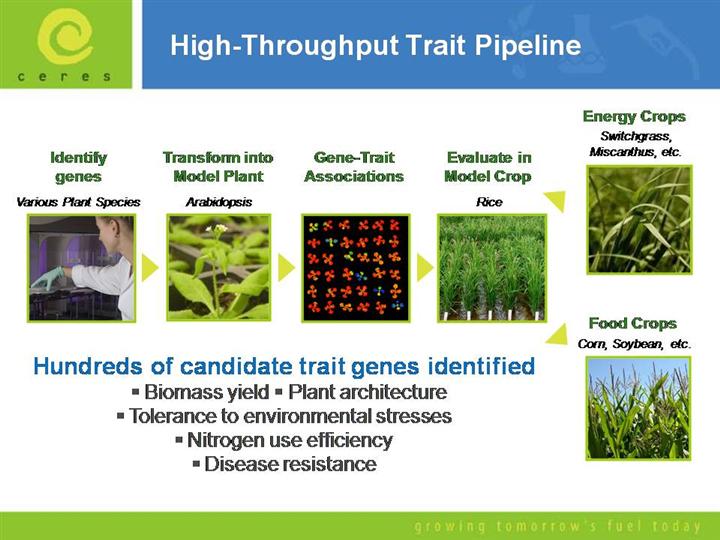| front |1 |2 |3 |4 |5 |6 |7 |8 |9 |10 |11 |12 |13 |14 |15 |16 |17 |18 |19 |20 |21 |22 |23 |24 |25 |26 |27 |28 |29 |30 |31 |32 |33 |34 |35 |36 |review |
 |
One of the great advantages of high-throughput genomics techniques is that instead of looking at only a handful of genes of interest – as was done for many years. We can now look at all the genes. How you then make use of all that data becomes a challenge in and of itself. This has been something that Ceres has been quite good it, as evidenced by our 2002 deal with Monsanto. We use model plant systems to speed discoveries. Before transforming crop plants, we first determine gene function, regulation, interaction and potential usefulness in a small, fast-growing plant called Arabidopsis—the lab mouse of the plant world. This plant is easy to work with can reliably predict the role of genes in multiple species. Promising traits are tested in a fast-growing rice species Genes that show value are then transformed and evaluated in energy crops. This process reduces uncertainty in the development of superior biotech traits. We also license these traits to companies working in other corps. Using proprietary high-throughput genomics techniques, we sequence full-length cDNA, which, unlike other techniques, provides us a physical reagent for continued testing. Model plants are then used to understand and predict the role of genes in other plants. We are able to study the expression levels of tens of thousands of genes in different plant species. Comprehensive assessments of gene expression, combined with other genetic and biochemical approaches, enable us to see how genes are regulated during development in different plant species. The most successful gene-trait combinations are tested in rice and other crops with the traits useful for cellulosic biofuel production transformed into energy crops as part of the commercial product development process. Arabidopsis Photo courtesy of Nicole Hanley Markelz of the Plant Genome Research Outreach Program at Cornell University. http://users.rcn.com/jkimball.ma.ultranet/BiologyPages/A/Arabidopsis.html |